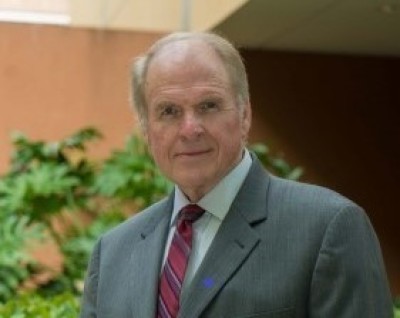A new day for the Church: The kairos before us (pt 1)

Church closings in the United States are outpacing new church plantings and openings, according to Lifeway Research as reported recently by The Christian Post.
The effects of the pandemic, the growing cultural disdain for “organized religion,” and the socio-politico turn to secularism have reduced church rolls. A Gallup report going all the way back to 1937 shows formal church membership has dropped from a high of 70% to 39% in 2020.
“Continued decline in future decades seems inevitable,” predicted Gallup Senior Editor Jeffrey M. Jones.
Is it over for American churches? Are we living in the era of end-times apostasy signaling an inevitable, irreversible slow fade of church life?
Movements come and go, say some historical observers, and it just may be that the church’s journey in finite time from the launch at Pentecost has sputtered out. Institutional atrophy seems inevitable.
That’s the gloomy view from a strictly chronological perspective.
However, the biblical view is the kairological outlook: this troubled age seems an “opportune time” for a new day for the Church of Jesus Christ in America and throughout the world.
The focus now must not be on trying to breathe life into dying institutions. In the biblical scheme, death leads to resurrection. Rather than seeing this period with the desperation of hopeless people watching the creep of finite time bringing death to antiquated hulks, the better focus should be that of the infusion of new life. Rather than pre-occupation with sustaining structure, the energy should be spent on building ministry.
Instead of mourning the death that is inevitable in chronos-time, it is better to rejoice at the new kairological day that rises before us, leading not to more institutionalism, but dynamism.
Midst the 1960s’ tremors Professor Findlay Edge penned, A Quest for Vitality in Religion (Broadman Press, 1963) Institutionalization, Edge wrote, is characterized by its members relating more to an organization “than to the living God.”
Further, the institutional quest causes a church to become introverted, focusing more on its institutional survival than on incarnational mission. That focus on survival and reconstruction on the ruins of a collapsed institution means a church’s own survival becomes more important than the Lord who created it, the truth He gave it, the call to which He summoned it, and the people to whom He sent it.
“A movement tends to go through certain rather definite stages from the time of its vigorous and dynamic inception until it becomes encrusted in a cold, lifeless formalism,” Edge wrote.
The movement emerges as a response to “errors, and the injustices of the status quo.” Initially, the movement is met with hostility and persecution. Gradually, however, some in society begin to tolerate it. Toleration leads to popular acceptance. In this period the movement begins to centralize its authority. Finally, the movement is swallowed into suffocating institutionalism, in which,
“Beliefs become crystalized into dogma demanding acceptance. Authority is now vested in either an individual or a group to compel conformity... Conformity becomes the end (purpose). The people will go through the forms, sometimes with vigor and devotion, but the spirit is lost. The movement has become encrusted with a cold, lifeless formalism—institutionalization.”
In the 1960s I was a reporter for a large daily newspaper. Covering the religion beat was among my assignments. I traveled to many church conventions and convocations. In a meeting of the Episcopal House of Bishops I interviewed Bishop James Pike, who was struggling not only with the survival of his own church, but his personal faith as well. I was in St. Louis for the merger that created the United Methodist Church. At the University of Notre Dame for another Episcopal Bishops confab I watched as protestors charged the platform and took over the meeting. I was on site to watch Presbyterians struggling for biblical doctrine launch the Presbyterian Church in America (PCA). I was in Dallas observing Southern Baptists battling to resist the drift into theological liberalism. In 1968 I interviewed Thomas Altizer, the professor at Methodist’s Emory University who was re-exploring Nietzsche’s idea that “God is dead.”
Everywhere it seemed the church was under siege. There was a desperate struggle to defend old foundations from the bulldozers of trendy beliefs and notions.
The institutionalists seemed to win, and the wreckage many now lament is the rubble of that bygone age.
Findlay Edge’s book was well-titled. The “quest” now must be for vitality, for life, not preservation. Thus, our mission today is not to replicate the institutions of the past. We live in the dawning of a kairos opportunity. Our mission should be to build the “Jesus Church” that ministers incarnationally to its world.
In 1973, after covering and writing about the church, I returned to God’s call to be a pastor. My passion was to build the church, but I hardly knew where to start. The church-growth movement was aborning. There were dozens of books and methodologies a pastor could explore—so many I couldn’t sort them out.
One day it hit me that the Lord Jesus Christ always had a crowd. I decided that before reading books on church growth and development I should first give intensive study to the incarnational ministry of Christ.
Out of that came a passion to build the “Jesus Church.” So, rather than agonizing over how to sustain the walls of crumbling institutions, the kairos before us can be that of a “new” variety of church, based on the ancient example of the incarnational ministry of the Head of the church.
We explore the nature of that church in Part II of this series.
Wallace B. Henley’s fifty-year career has spanned newspaper journalism, government in both White House and Congress, the church, and academia. He is author or co-author of more than 20 books. He is a teaching pastor at Grace Church, the Woodlands, Texas.
For media inquiries, contact: [email protected]




























